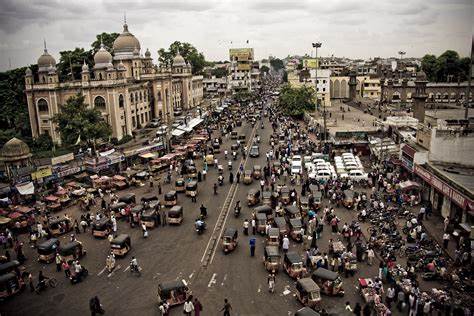A Personal Preamble
I’m always amazed when I return to India at both how similar and how different it is from the US, where I now live.
My family’s originally from India and I grew up there till I was 5, and then intermittently have lived and worked in India. So, in many ways, India is deeply familiar to me. From the rich smells of the streets, to the hymns that ring out from the omnipresent temples, mosques and churches.
But in other ways, it is a very different different place than the US. This is particularly and acutely true in the institutions of India. Though English is nearly omnipresent in both government and business, and highly educated professionals abound, including many with degrees from top western institutions, doing business in India is fundamentally different.
As IdeaScale, the company which I’m CEO of, begins its expansion into India, we have had to be thoughtful about the unique considerations of this inimitable country, now also the world’s most populous.
In this three part blog series about innovating in India, I try and explore some of the distinct challenges of enabling and accelerating innovation in India.
Introduction
Innovation is a driving force behind economic growth and prosperity, and India is well-positioned to be a global leader in innovation. With its massive population, growing middle class, and abundance of highly skilled labor, the potential for innovation is limitless. While there are some challenges to innovating in India, we are confident that these challenges can be overcome with the right approach.
In this first part of our three-part series, we will explore some of the unique challenges that innovators face in India.
Regulatory Complexity
India’s regulatory environment can be complex; however, there are many initiatives underway to simplify and streamline regulations. What’s particularly good for the future is that this streamlining is continuing under both of India’s major political parties, so regime changes are unlikely to upend the continued simplification of doing business in India. While there may be some variation from state to state, the governments (both federal and states) are working to create consistency and transparency in regulatory frameworks. Although obtaining permits, licenses, and approvals is still time-consuming, we believe that these processes can be improved with greater efficiency and communication.
Funding Challenges
Access to funding is a critical component of innovation and this remains a key challenge for innovation in India, as funding sources are fewer than in the US and more concentrated on certain sectors and within certain departments of companies. Because of the higher inflation and interest rates in India, the higher nominal rate of return required to generate returns for investors, inhibits many from funding new companies and projects.
Talent Challenges
India has a highly skilled workforce, with one of the most highly educated and growing workforces in the world, particularly in STEM fields. However, there is a substantial difference in the quality of education across post-secondary institutions, and the style of education has historically prioritized rote memorization instead of critical thinking. Although this is changing over time, both due to a younger cohort entering the workforce and due to more critical-thinking oriented education, this does encumber progress. On the more positive side, these education and talent challenges are well-known and researched, and everything from educational institutions, corporations and governments are focused on investing in more and better education to reduce talent gaps.
Infrastructure Challenges
Infrastructure is a mixed bag in India. While India’s 8 top-tier cities (officially classified as Tier X by the government, including well-known international cities such as Delhi, Mumbai and Chennai) have world-class infrastructure, many of the second-tier cities (Tier Y in the government classification system, including cities populations ranging from 500,000 to 5,000,000, still have uneven and challenging infrastructure. This ranges from poor roads, electrical outages, and lack of high speed internet. Practically speaking, in a country of 1.5 billion people, infrastructure challenges hamper the ability of hundreds of millions of people to participate in the innovation economy. The good news, however, is that geographical mobility is high (due to a variety of socioeconomic factors), making it reasonably easy for both individuals and corporations to relocate to locations with better infrastructure.
Moreover, both governments and corporations are making significant investments in infrastructure. In travelling through any of India’s train stations or world-class airports, you will be indundated by advertisements for infrastructure related companies, ranging from cement to steel to telecommunications, and including both major national champions (e.g., Jindal Steel) and international firms (e.g., KBR Engineering).
Cultural Challenges
India’s diverse cultural landscape is both an asset and a liability.
India boasts significant populations of many of the world’s major religions and a cultural history dating back four to six thousand years. This venerable and diverse history, however, likely historically inhibited Indian innovation. For example, traditional Indian culture has valued hierarchy and stability over risk-taking, which has inhibited those with innovate ideas or visions from gaining the social and financial support to turn their ideas into reality. In some ways, post-independence India (until reasonably recently) has similarities to Japan before the Meiji Restoration where Japanese culture underwent significant changes in order to become more competitive with western powers. India has made this transition more gradually, over the last thirty of so years, avoiding the political and social upheaval associated with the Meiji restoration.
Conclusion
In conclusion, India has many advantages that make it a fertile ground for innovation. While there may be some challenges, we are optimistic that with the right approach, India can overcome these challenges and continue to be a leader in innovation. In the next part of our series, we will explore how India’s unique challenges have their origins in its culture, history, and institutional structures.
Most Recent Posts
Explore the latest innovation insights and trends with our recent blog posts.













